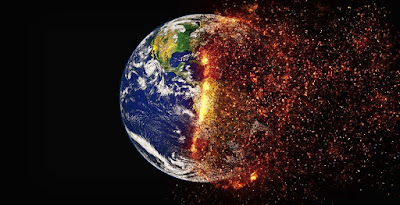The impact of water scarcity on the armed conflict-Part III
In response to the water crisis, the Water Global Practices Sector at the World Bank developed a new strategic action plan at World Water Week 2019 focusing on three main interrelated pillars, namely, preserving water resources, providing services, and building resilience for a world in which everyone enjoys water security, The World Bank’s move came based on a study by it that indicated that “entire regions may witness a decrease in their GDP by up to (6%) by 2050 due to water-related losses in the sectors of agriculture, health, income and property, and the risk increases with the increase in population density.” And climate change.
David Michel, director of the Environmental Security Program at the Stimson Center (Peace and Security Research Organization) in Washington, has explained, “The issue of water wars is more complex than its direct counterpart from other resources. It is important to distinguish between the types of resources and pathways that can Through it, it contributes to the conflict (and Michel added in his report) that water, in exchange for other conflict resources such as diamonds, is not plunderable, and this means that it is not a resource that can be loaded, as a cubic meter of water weighs half a ton).
The Middle East and North Africa region is the most threatened population in access to fresh water and warns that this region will suffer greatly from water scarcity due to rapid population growth, lack of transboundary water agreements, unsustainable water management and widespread environmental degradation, especially due to conflicts The armed forces that have ravaged the region for decades, where the per capita share of water resources is equivalent to only one-sixth of the world average, and this percentage is also decreasing, and the region suffers from the problem of depletion of surface and groundwater alike, and this means that the agricultural sector is struggling to compete for Water with the industrial sector in addition to the climate, which is already characterized by being arid and very dry and volatile to a large extent in light of the recurrence of dry seasons.
The Middle East and North Africa region accounts for about (60%) of the total losses in human lives worldwide since the beginning of the millennium and before the recent political turmoil.
as many countries of this region were struggling to manage their water resources in a sustainable and effective manner and expand their water resources. The scope of coverage of water supply and sanitation services.
Conflicts associated with some institutional obstacles have exacerbated water challenges and deteriorated water services.
In Yemen, the destruction of sewage networks and treatment plants resulted in the rapid spread of cholera.
In Gaza, more than a quarter of The total number of diseases registered in the sector is due to poor water quality and difficulty in accessing it, according to a study conducted by the American (Rand) Corporation.
(10 million) people live in poverty, and the conflict has deteriorated access to water and sanitation services, thus increasing the likelihood of waterborne diseases and increasing child mortality. At the age of five, and as a simple example of that, one of the conflicting parties took control of the Fijeh Spring and the Barada Spring, thus depriving more than /8/ million citizens of drinking water at that time, as the two mentioned springs constituted the main source of drinking water for the capital, Damascus, and the surrounding cities and villages, as well as What happened was the destruction of part of the strategic Euphrates Dam as well.
“These services can deteriorate due to the direct effects of the conflict, such as the destruction of infrastructure, or the indirect effects (ongoing erosion of the ability to operate and maintain services) on the water and sanitation service provider and infrastructure It is becoming more and more influential in cities where communities depend on a complex and interconnected set of services.”

Comments
Post a Comment
Thank you for comment